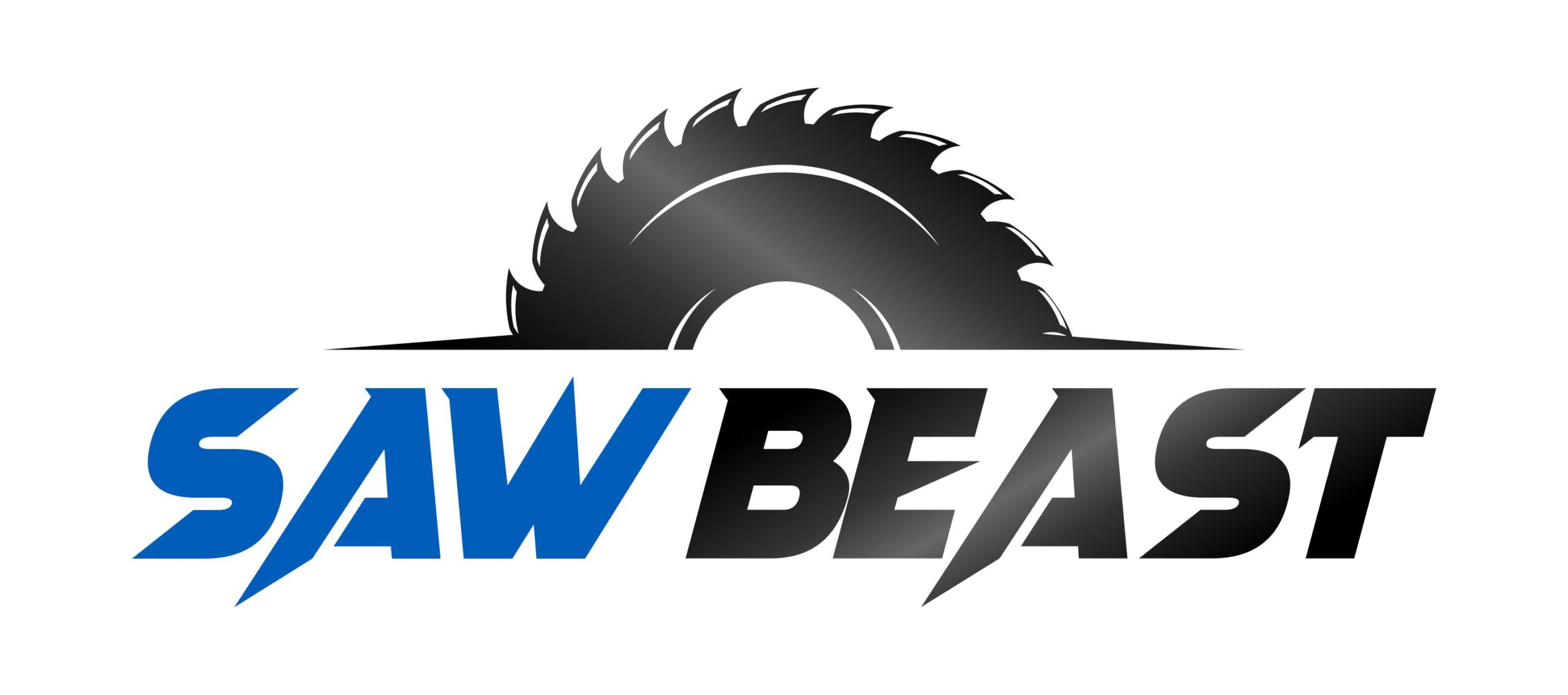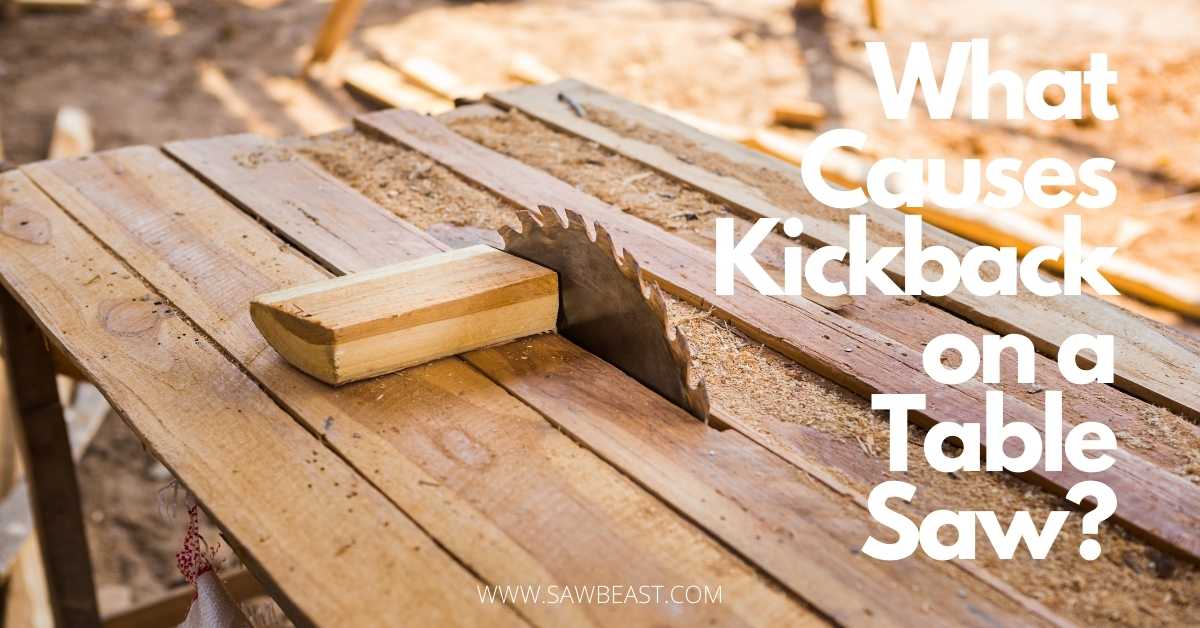Table saws are one of the favorite tools of any woodworker. You can create all types of products with intricate designs if you know the proper technique of using a table saw. However, table saws must be approached with a healthy level of fear. One of the most common forms of injuries that people suffer from using a table saw is related to kickback. It is essential to understand what a kickback is to prevent it accordingly.
Many kickbacks are preventable if you follow all the safety precautions. If you are new to woodworking, you need to be highly cautious of kickbacks. According to the National Center for Biotechnology, table saws have caused over 30,000 injuries every year in the United States alone. Kickbacks were one of the main reasons for injuries caused by table saws.
What Is a Kickback?
Before talking about the causes and preventive measures for avoiding a kickback, it is essential to understand what a kickback is. People usually do not understand what a kickback is, so they underestimate the dangers associated with it.
A kickback is when a piece of wood is thrown back at you during a cut. This happens all of a sudden, without any kind of warning. The speed of the stock is so high that you hardly get any time for reaction. People stay careful, believing that they might survive a kickback; however, this event is so sudden that you get injured without having any time to react and prevent yourself.
There are numerous reasons and causes associated with the behavior of a kickback. Due to this behavior, you can get severely injured. In the worst possible scenario, you might have your hand or your fingers mutated. The trauma from the kickback, such as the wood striking the head, torso, or chest of the woodworker, can discourage him from using the table saw again.
We have listed the causes of a kickback and safety precautions for you to follow so that you can prevent such incidents.
What Causes Kickback on a Table Saw?
We will be discussing different scenarios that might lead to a kickback. Understanding these situations can help you stay prepared and prevent a kickback.
1. Misalignment of Fence or Blade
Let’s discuss the reasons that can cause a kickback due to negligence while making a cut. You can experience a kickback if you set the wood against the fence and push across the blade on the table saw. The wood loses pressure against the fence and starts drifting away from it. The piece of wood might rotate as well due to this incident. Hence, it eventually gets caught on the backside of the saw and propels backward at the woodworker at an incredibly high speed.
Getting a piece of stock caught between the fence and the blade is always a bad idea. It will cause a kickback every time. The reason behind this incident can be a misaligned blade or a misaligned fence. Hence, be careful in setting up your table saw.
2. Misalignment of Stock
Misalignment of stock during the cut can also cause a kickback. When you have your stock misaligned and you put pressure on it to make a cut, the stock moves away from the fence and rotates towards the blade.
The rotational force is exceptionally high, and it causes the stock to get caught on the back tooth of the blade. You lose track while making a cut, and the added pressure with the rotational force causes a dangerous kickback.
Hence, it is essential to ensure that the piece of wood is correctly aligned while making cuts. Otherwise, it might lead to a dangerous kickback with serious injuries.
3. Lack Of Attention
You need to be highly attentive while making a cut with the table saw. Check everything before making a cut. Check the alignment of the blade, fence, and stock. In addition, inspect the stock to make sure it is not crooked. Replace your dull blade or get it sharpened for precise and accurate cuts.
If you do not feel at your best due to any issues like common cold or fever, or lack of sleep, prefer to work later when things get better. Lack of attention can lead to countless disasters that you might not be able to imagine.
4. Free-hand Cuts
Free-hand cuts are another cause for kickbacks. Follow all the safety measures and do not make free-hand cuts. Tables come with rip fences and miter gauges that allow you to make different cuts. Rip fence helps you with rip cuts. They support the stock, so you can easily make a cut.
On the other hand, the miter gauge helps you with crosscuts. They make sure the stock does not propel back at you. If you use the miter gauge and rip fence simultaneously, you will be in a difficult situation. Therefore, you need to be cautious while making cuts. Follow all the instructions and do not make free-hand cuts at all.
5. Poor Blade
A poor blade is another reason for kickbacks. You can identify if your blade is not working well when encountering resistance from the wood while making cuts. Other than that, you can see that the stock often gets caught in the blade. The edges of your blade might also not be as sharp as they used to be. In addition, you might also find rust on your blade. All of these indicate that your blade has reached a bad position, and it can no longer serve you well.
The options in this scenario are: either get your blade resharpened, if possible; otherwise, get a new replacement blade for your table saw. It is essential to have a good blade while making cuts to prevent any forms of potential injuries.
A dull, poor blade is unsafe to work with. You will have trouble cutting your stock through it. This can lead to overheating and warping, eventually leading to misalignment between the blade and the fence. As mentioned above, misalignment can lead to a dangerous kickback.
6. Crooked Stock
You might be aware of the consequences of cutting through a crooked stock. If not, let us tell you that it is a risky task and we do not encourage you to do that. Crooked stocks might cut well a few times; however, they should not be used. Crooked stocks should be avoided because such stocks have pressure stored in them.
When the saw cuts through the crooked stock, the pressure stored in the area is released. This can cause a kickback eventually. Hence, avoid such stocks that can pinch the blade and cause a kickback.
How To Prevent a Kickback?
Now that you know what a kickback is and the causes behind this incident, you can easily prevent it by avoiding the reasons that lead to a kickback. We have listed precautionary measures for you to follow so that you can prevent a kickback while making cuts with your favorite table saw.
1. Do not stand directly behind the stock
The position of your body is essential in preventing a kickback. Properly position your body before making a cut each time. Do not stand directly behind the stock. This might not prevent a kickback, but it can save you from any injury that might occur otherwise. Standing directly behind the stock puts you at risk of injuries. The piece of wood might hit you directly.
2. Make sure that the stock is uniform
It is best to use a piece of wood that is uniform. Crooked stocks can lead to a kickback, as mentioned above. In addition, twisted bowed, or warped stocks are also dangerous. It is ideal to use a stock that is uniform.
3. Use a riving knife
A riving knife is a thin, curved attachment made of metal locked at the back of the blade. It follows the curvature of the blade and moves up or down while making cuts. This prevents the wood from getting stuck in the back of the saw if it drifts away from the fence.
A Riving knife needs to be installed at all times. It can make all kinds of cuts, therefore, do not remove it at all. In fact, all table saws that have been produced after 2008 come with a riving knife. Hence, consider it necessary to be attached at all times.
4. Use a splitter
A splitter might not be as effective as a riving knife; however, it prevents kickback. It works similar to a riving knife by keeping the wood from drifting into the blade. A splitter does not move with the blade, similar to a riving knife. In addition, it is smaller and does not curve with the blade, when compared to riving knives. Splitters need to be removed while making non-through cuts.
Splitters are better than working with no protection at all. Hence, if you do not have access to a riving knife, consider a splitter as a good alternative for it.
5. Use a crosscut sled
A crosscut sled is another safety measure you can take while making cuts. It keeps your hands away from the blade and moves the fence of the front of the blade instead of the side. It helps in preventing kickbacks.
6. Use a push stick
It is best always to make use of a push stick. A push stick is used to push the wood through the blade from a distance. It is ideal to use a push stick instead of your hand because this allows you to stand at a distance instead of working near the blade. Hence, the risk of accidentally pushing your hand onto the blade minimizes with the use of a push stick. Moreover, sticks give you better control of the stock.
7. Do not let your guard down
A blade guard is one of the safety equipment you should use while working with a table saw. A blade guard prevents your fingers from touching the blade, and it prevents you from dropping your workpiece directly onto the blade.
The blade guard might create issues for you to make accurate and precise cuts. If you have excellent control over the workflow, you can remove the blade guard to make exact cuts. However, as a beginner, we would never recommend this to you.
8. Keep the table clean at all times while making cuts
To prevent any piece of wood from being caught in the blade and thrown back at you, keep your workspace clean at all times.
9. Keep your fence parallel to the blade
Setting your fence parallel to the blade can prevent the misalignment of the stock, blade, and fence. This will prevent kickbacks.
10. Do not make free-hand cuts
As discussed, do not make free-hand cuts. It is ideal to use a miter gauge for crosscuts and a rip fence for rip cuts. Do not use a rip fence for a crosscut or a miter gauge for a rip cut. Also, do not use both of these at the same time.
11. Properly check the condition of your blade
As discussed, it is ideal to make cuts using a sharp blade only. Your blade needs to be in its best position; otherwise, the wood can get caught between the blade and lead to a dangerous kickback.
12. Stay attentive at all times
It is essential to stay alert at all times. Check everything before you start working and make sure you follow all the preventive measures.
Conclusion
We hope the article was easy for you to understand. It is essential to understand what a kickback is and what causes it. When you are aware of these things, only then can you prevent a kickback. Follow all the safety measures and work with complete confidence. We believe in you and we are sure you would do wonders. Good luck!

